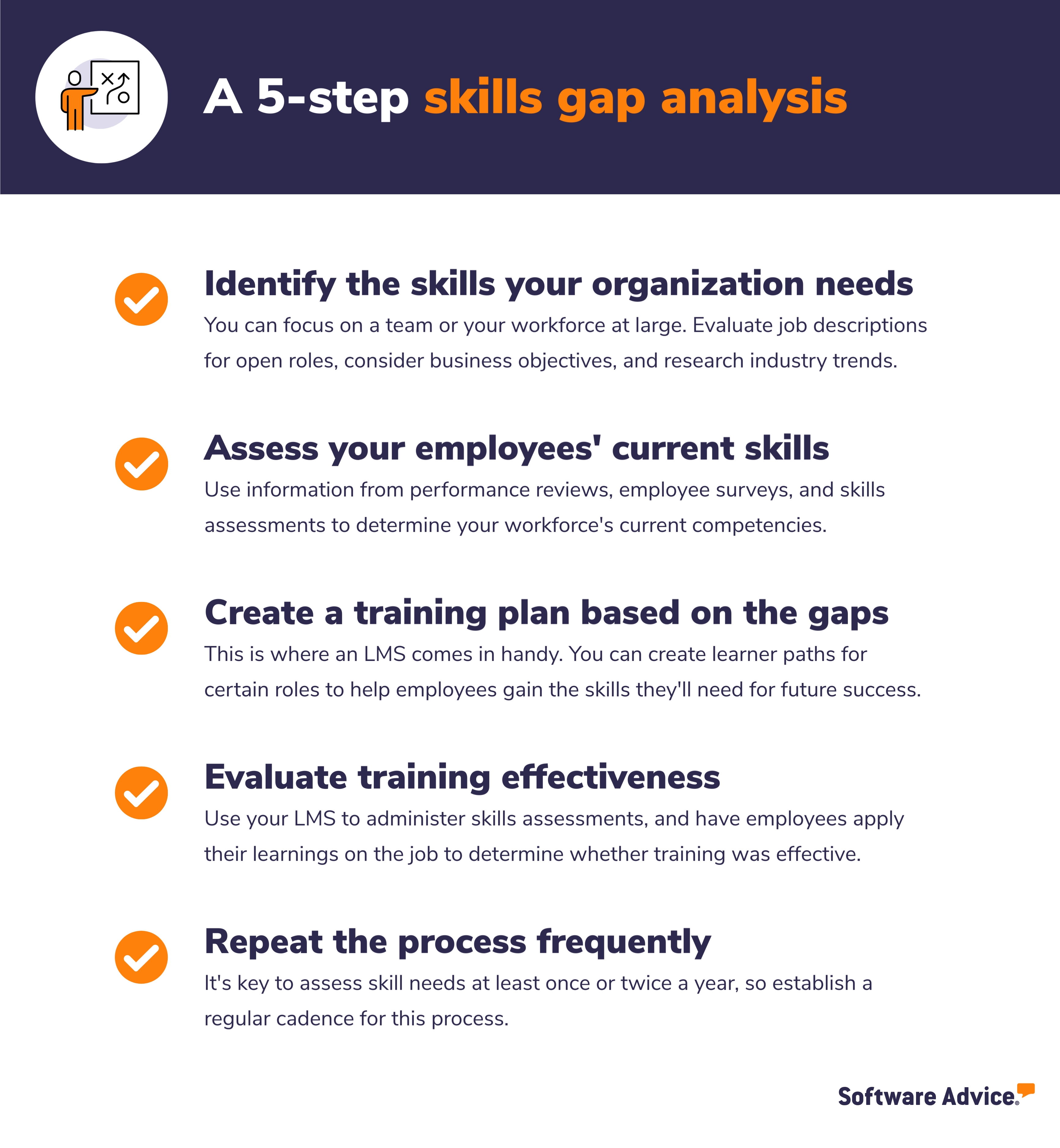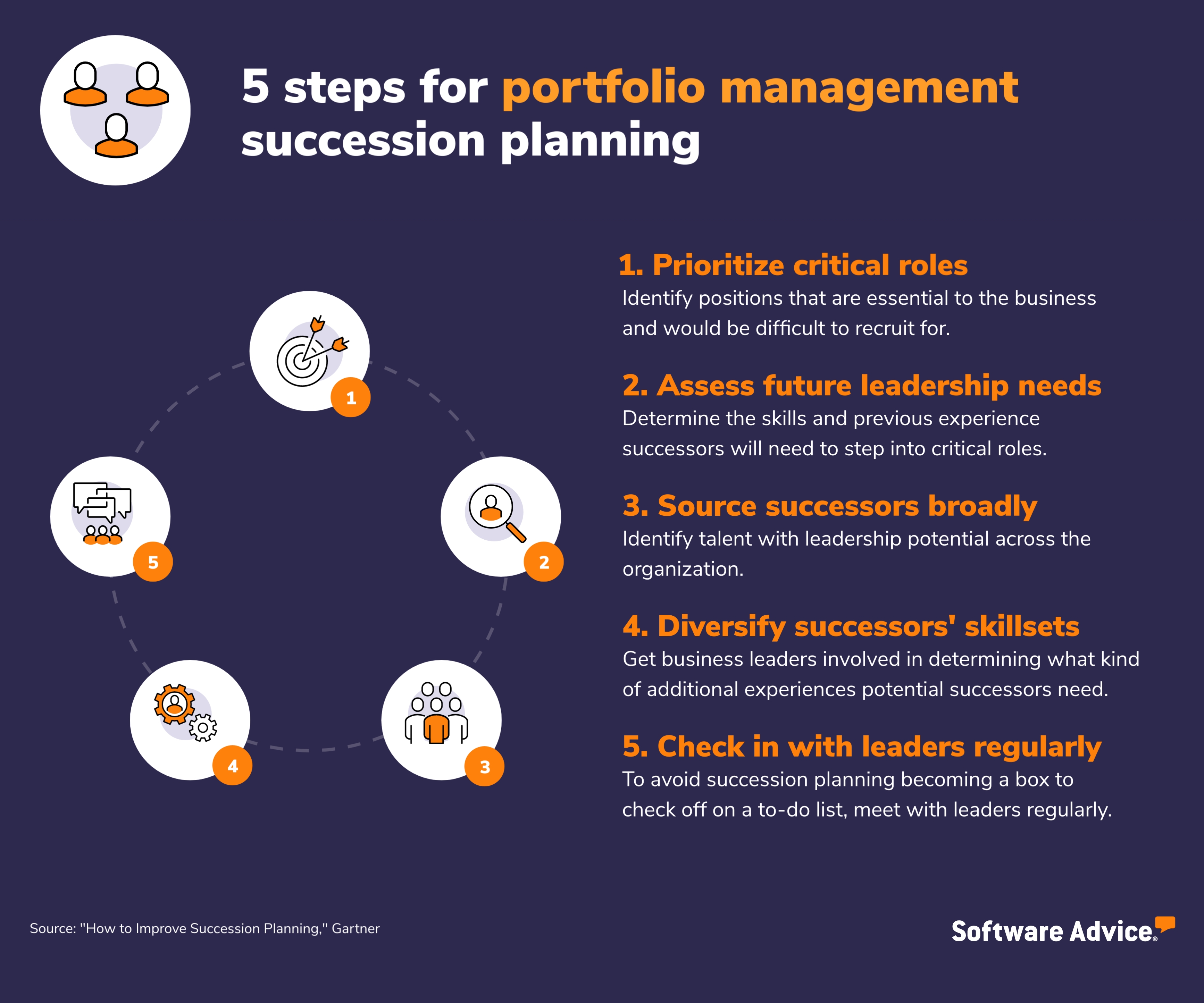Future-Proof Your Workforce With Talent Mapping
According to Software Advice’s Recruiting Strategy Survey*, two of the top factors hindering recruiting efforts are: 1) a lack of recruiting resources and 2) rapidly changing roles and responsibilities.
The solution to these hurdles? Talent mapping, one of the most efficient and comprehensive workforce planning strategies businesses can use.
Talent mapping helps HR teams anticipate skill needs before they become time sensitive, leading to better hiring and development decisions. Packed with insights from Gartner and our own research, we put together this guide to talent mapping for recruiting leaders whose organizations are currently lacking a formal workforce planning strategy.
What is talent mapping?
Talent mapping is a workforce planning technique that involves forecasting an organization’s future skill needs and adjusting talent acquisition and development efforts in order to meet them. Similar to career pathing, talent mapping considers both an employee’s current skill set and their long-term career aspirations when identifying individuals with potential to step into key roles.
Why should businesses practice talent mapping?
Businesses who practice talent mapping reap significant benefits—primarily, the three outlined below.
It helps close skills gaps: Eighty-seven percent of organizations are experiencing a skills gap, and less than half are aware of how to address the problem [1]. Talent mapping provides a framework for doing so through creating an inventory of skills you want to see in your workplace, identifying skills gaps, and planning out steps to take to fulfill future skill needs.
It helps identify key roles within the organization: The highest-paid people on your company’s payroll aren’t always going to be the ones driving business outcomes. In truth, employees from a variety of different levels across the organization make high-impact contributions. Critical role identification (an element of talent mapping) helps identify these roles in order to prioritize hiring and succession planning efforts related to them.
It improves transparency into career advancement opportunities for employees: Nearly half of employees feel their organization does not provide sufficient career guidance to employees [2]. This is a problem considering that employees rank career advancement opportunities amongst the top factors that influence their job satisfaction. Effective talent mapping requires managers to communicate development and advancement opportunities to their team members, making career paths more apparent for employees.
How to map talent in 4 steps
From conducting a skills gap analysis to practicing succession planning, here are the four steps you need to take to ensure your talent mapping strategy is truly effective.
1. Conduct a skills gap analysis
It shouldn’t come as a surprise that in order to map talent, you need to conduct a skills gap analysis. Skills gap analyses involve making an inventory of your workforce’s current skills and comparing them to the skills your business most needs.
We’ve covered how to conduct a skills gap analysis in depth in several different articles on our blog—most recently in 6 Stages of the Talent Life Cycle and HR's Role in Them. You can also find a summary of the process below:

Tools to help you conduct a skills gap analysis:
Some HR software platforms are built to assist with skills gap analyses. For example, they may allow you to add skills as tags in employees’ profiles, assess workers’ competencies with tests, or create a skills matrix (like in the example below).

A skills matrix built in Skills Base (Source)
Investing in an HR tool with skills management capabilities can be extremely helpful for mid- to enterprise-size businesses with complex organizational structures. But if you don’t have the budget to do so, don’t worry, because we’ve created a free, downloadable skills gap analysis template you can start using today.
2. Start an upskilling initiative
After you’ve conducted a skills gap analysis, it should be clear which critical competencies your organization is currently lacking. So next, you’ll need to embark on upskilling your workforce in order to attain those. Upskilling should be prioritized over hiring new talent for several reasons; for starters, we asked recruiters what factors are currently hindering recruiting efforts, and the top answer was that there aren’t enough qualified job seekers*.
Further, there’s evidence that upskilling works. According to Gartner, 37% of organizations report that upskilling and reskilling provides the most significant opportunity to close talent gaps over hiring new employees (22%), consultants (13%), and outsourcing talent (14%) [3].
There are a couple of ways you can go about upskilling your existing talent: You can pay an external provider to host training sessions or bootcamps, or you can start an e-learning program. Either way, you’ll need to use the results from your skills gap analysis and partner with department heads to determine which skills they see as a top priority to develop in the near-future.
Learn more about both of these options (and how to get started with each) in our content: Corporate E-Learning: 3 Options for SMBs
Tools to help you upskill workers:
If you’re considering using an external training provider to upskill your workers, check out our directory of training companies. You can filter this directory to show options tailored to your industry, budget, and the size of your company.
Or, if you’re leaning toward starting an e-learning program, you can get started by browsing our learning management systems (LMS) category of tools. And don’t miss our guide: How To Create E-Learning Modules That Boost Training Retention.
3. Identify and prioritize hiring for key roles
Key (or critical) roles are positions within the company that have a high impact on business outcomes. They exist at every level, from entry level to C-suite. Identifying key roles is an essential part of the talent mapping process, because it gives you the insight needed to prioritize hiring and succession planning efforts for high-impact positions.
Identifying key roles is easier said than done, but there are a few indicators to look for when examining different positions within your workforce:
Specialized knowledge or expertise: Are there any other current employees who can perform the responsibilities associated with the position if the individual currently in the role is absent? Does the employee in this role have pertinent knowledge about the history of internal processes or strategy that makes them particularly valuable?
Rare skill set: Are the hard skills possessed by the individual in this position hard to come by in the labor market? For example, do they have a highly technical background that makes them difficult to replace?
Forthcoming retirement: Has the employee started the process of retiring or given notice of their plans to retire? If so, you may need to prioritize succession planning for their position.
Leadership: Is the role operationally or strategically critical? This can encompass department heads and C-suite level executives, but also strategists and program managers who work on essential projects.
Related reading
Tools to help you identify and hire for key roles:
Recruiting software and applicant tracking systems can help you find candidates with the skills necessary to fill critical roles. There are several benefits to using these kinds of platforms to bolster your recruitment strategy: For example, they allow you to source candidates from a wide variety of places, measure applicants’ skills through assessments, and consolidate communication with those outside of the human resource function involved in the hiring process (such as the hiring manager and interviewers).
Staffing services can also be of help when hiring for key roles. As is covered in our guide to recruiting executives, outsourcing the search to an executive search firm has its own advantages. For instance, staffing agencies typically have their own talent pool of prospective candidates they can use to jumpstart their search.
4. Practice succession planning
Succession planning is a strategy that involves identifying key positions within your organization (which we covered in the last section) and developing action plans for individuals with potential to assume those positions.
Most (61%) organizations conduct succession planning at least once a year [4]. However, organizations fill leadership positions with pre-identified successors less than half (48%) the time [5]. In order to improve these numbers, we suggest adopting a portfolio management approach to succession planning.
We give more advice on adopting a portfolio management succession planning strategy in our content, 6 Stages of the Talent Life Cycle and HR's Role in Them. In the meantime, here’s a summary of how this approach works:

Tools to help your succession planning strategy:
There’s a whole category of tools built to help with the succession planning process. Succession planning software includes features such as competency modeling, goal setting, 360-degree feedback, and training management—all of which assist with different steps of the process. Both SMBs and enterprises can benefit from succession planning software, and thankfully, there are tools in our directory that target both kinds of users.
Get the resources you need to start talent mapping today
Looking for a quick recap of the advice we gave in this guide? Check out this short video:
In this guide, we’ve mentioned several software systems that can help with different aspects of your talent management strategy:
HR software: This broad category of tools includes everything from skills management systems to full-suite human capital management platforms. Businesses of all sizes can benefit from using HR software—it’s just a matter of finding the tool with the features your organization needs.
Want a shortcut to success?
Learning management systems: When it comes to upskilling and development, there’s not a better tool to help out with these efforts than a learning management system. And just like HR software, this category includes a wide range of options that are built for different audiences, use cases, and budgets.
Recruiting software and applicant tracking systems: At some point, meeting your organization’s future talent needs will require hiring new employees. Recruiting tools (including ATS) are there to assist with every step, from streamlining your sourcing strategy to scheduling interviews and sending offer letters.
Succession planning software: Lastly, succession planning is much easier with a platform that’s built to aggregate and analyze data about employee performance, potential, and development. Investing in one of these tools can improve talent mobility and retention at your organization, alleviating the challenges associated with finding and attracting the right talent to your business.
Need help with the software selection process? Reach out to one of our human resource advisors—it’s fast and free. Click here to access our advisor chat line.
Sources
Leveraging Skills Adjacencies to Address Strategy’s Technical Skills Gaps, Gartner
Quick Answer: How Employees Perceive Their Organization’s Support and Career Opportunities, Gartner
Foster a Culture of Agile Learning to Upskill IT Employees Faster, Gartner
Case Study: Agile Succession Planning (Bridgestone), Gartner
How to Conduct Succession Planning for Senior Leaders, Gartner
Methodology
* The Software Advice Recruiting Strategy Survey was conducted in July 2021. We collected 300 responses from workers with recruiting responsibilities at U.S. employers. The goal of this survey was to learn how much companies are struggling with recruiting and hiring and what solutions they’ve considered to improve recruiting and hiring outcomes.